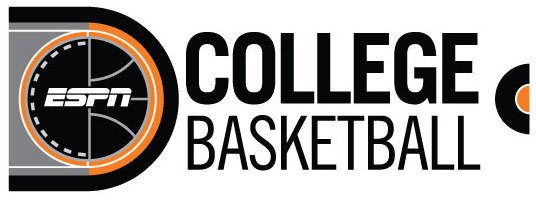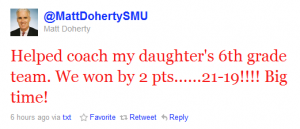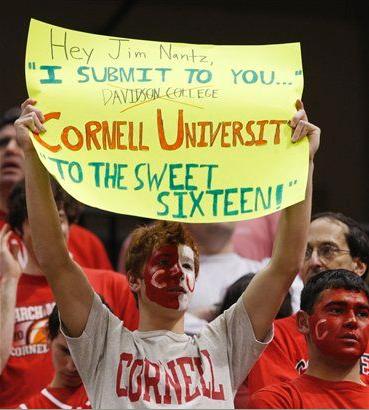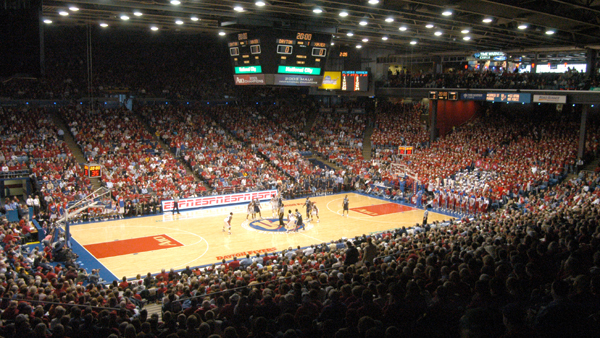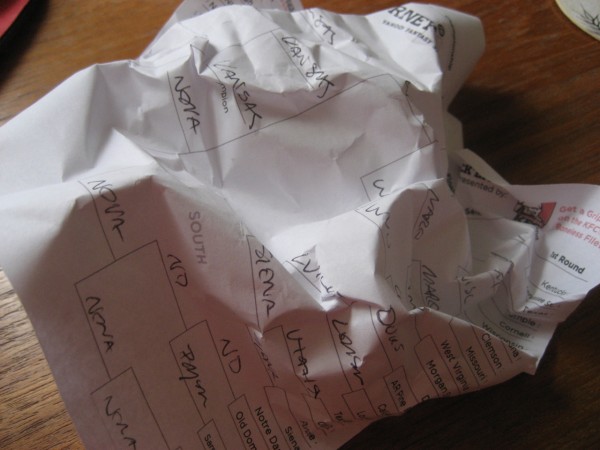Highlighters & Headsets: Reviewing the Marathon
Posted by rtmsf on November 19th, 2010
Highlighters & Headsets is an occasional look at the coverage of college basketball – from television to print (they still make paper?), blogs to bracket busters, and Gus Johnson to Gameday – written by RTC contributor Steve Moore. He welcomes your comments, column ideas and Dickie (V) jokes at smoore71@gmail.com. You can also follow him on Twitter @smoore1117.
Hoops Marathon Tests ESPN’s Bench Depth
ESPN catches a lot of flak from a lot of people – much of it deserved. But as almost any college basketball fan will tell you, the College Hoops Tip-Off Marathon is one of the best things on the ESPN calendar. It’s unique and quirky, without being overly gimmicky. We get to see teams and players we won’t see again all season, and have an excuse to stay up until all hours of the night. For me (and I hope at least a few others, or else no one will be reading this), part of the allure is also keeping an eye (and ear) on how ESPN performs during its annual test of endurance and depth.
Personally, I think this is the kind of thing that proves why ESPN is the gold standard. Its resources (read: dollar bills, y’all) are endless, and, for the most part, its announcing crews are professional and entertaining. Unlike some people here at RTC, I couldn’t make it through the entire 24 hours without the help of Red Bull, Four Loko or some other delicious energy beverage. But I did catch enough to put together a quick rundown of the ups and downs of ESPN’s effort on what was, overall, an incredible day for hoops fans everywhere.
THE PERFECT ATTITUDE
Nearly all of ESPN’s announcing teams on Tuesday – and the general attitude of the network’s promotion – seemed to understand the event. By that, I mean the network seemed to understand that the whole concept of playing basketball at 2, 4 and 6 a.m. is a little strange, and it’s OK to increase the off-beat goofiness and drop the life-or-death mindset that is more appropriate during Championship Week or UNC-Duke.
As the hours got later, the announcers seemed to adapt with the late-night viewers watching at home. Sean McDonough and Bill Raftery (Memphis-Miami, midnight) always sound like they’re sitting at the bar talking about the game, but Carter Blackburn/Mark Gottfried (St. Mary’s-St. John’s, 2 a.m.) and Todd Harris/Mark Adams (Hawaii/Central Michigan, 4 a.m.) lightened the mood and didn’t take themselves too seriously. We got much less in the way of X’s and O’s, and more basic information about teams and players we may not know too well.
The prize, however, goes to the duo of Rob Stone and Jay Williams, who called two games in two different states, 12 hours apart (Monmouth-Stony Brook, 6 a.m., and Villanova/Marist, 5:30 p.m.). Stone’s lighthearted style, and the fact that he’s not a college hoops specialist, just seemed to work well with a ridiculous 6 a.m. tip in a high school-sized gym at Monmouth. Part of the allure of the 6 a.m. game is wondering what the atmosphere is like and whether the players and coaches are into it. The duo kept me interested, and also seemed completely on board with their early wakeup call. It would have been easy to tell if the pair felt like it was forced into the ridiculous assignment. Stone and Williams seemed to embrace the absurdity of it all, and even filmed their trek from Monmouth to Villanova. The clip of Stone rocking out to Journey was one of the day’s highlights.
In fact, I would even suggest a few more of these quirky announcing journeys during the marathon. Maybe let McDonough and Raftery start and finish the event, or send Dickie V to Monmouth or one of the smaller schools. God knows he sees the ACC enough.
GREAT NEW VOICES, AND GRATING FAMILIAR FACES





























